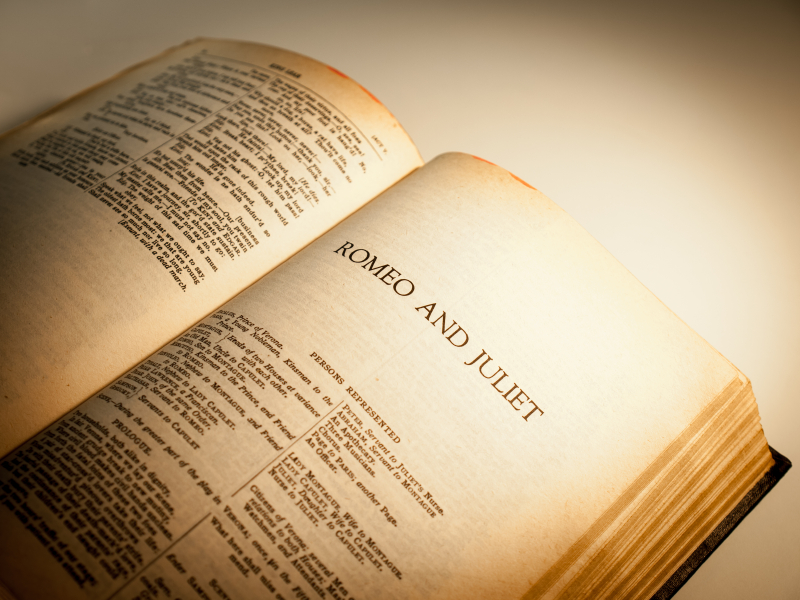Alliteration is defined as a repetition of the first sound or sounds in two or more words that follow each other in succession. These words may be adjacent or may be separated by a word or even a few words. A simple example is “Betty had a baby boy.”
Alliteration is found very often in poetry; but, is also found in many works of literature because it adds interest to the written and spoken word.
Alliteration in Romeo and Juliet
The play Romeo and Juliet, by William Shakespeare, has many examples of various literary tools including alliteration.
The following are all examples of alliteration:
- “From forth the fatal loins of these two foes; A pair of star-cross’d lovers take their life.” (From the prologue to Act 1. This is an example of alliteration with the “f” and “l.”)
- “Now old desire doth in his death-bed lie,” (Spoken by the chorus in the prologue of Act 2. The alliteration is the “d” sound.)
- “The day to cheer and night’s dank dew to dry,” (Spoken by Friar Lawrence in Act 2 at the beginning of Scene 3. This example shows four repetitions of “d.”)
- “If e’er thou wast thyself, and these woes thine, Thou and these woes were all for Rosaline.” (Spoken by Friar Lawrence in Act 2, Scene 3. This shows alliteration with the “w” and “th” sounds.)
- “The very pin of his heart cleft with the blind bow-boy’s butt-shaft: and is he a man to encounter Tybalt?” (Spoken by Mercutio in the beginning of Act 2, Scene 4. The “b” sound is repeated four times.)
- “Gallop apace, you fiery-footed steeds Towards Phoebus’ lodging!” (Spoken by Juliet in Act 3 at the beginning of Scene 2. This shows that alliteration is not just the letter but the sound with “fiery”, “footed” and Phoebus.”)
- “As Phaethon would whip you to the west,” (Spoken by Juliet in Act 3 at the beginning of Scene 2. The “w” is being repeated.)
- “I have a faint cold fear thrills through my veins, That almost freezes up the heat of life.” (Spoken by Juliet in Act 4 toward the beginning of Scene three. The “f” sound is used three times.)
- “When griping grief the heart doth wound, And doleful dumps the mind oppress,” (Spoken by Peter in Act 4, Scene 5. Alliteration is found in the “g” and “d” sounds.)
Similar Literary Tools
Alliteration is just one type of literary tool. Both assonance and consonance are related word tools used by Shakespeare as well as by many poets and authors:
- Assonance is the repetition of vowel sounds inside words that are close to one another. “He looked at the wooden bookcase” is an example of assonance.
- Consonance is the repetition of a consonant sound but it can occur anywhere in the words, like “I will cook the duck in the crock”. Alliteration is a special kind of consonance since it appears only at the beginning of words.
Alliteration, and other literary tools, are important literary tools to consider when you want to emphasize the words being spoken or add to the mood of the scene.

 Alliteration Examples In Romeo And Juliet
Alliteration Examples In Romeo And Juliet
